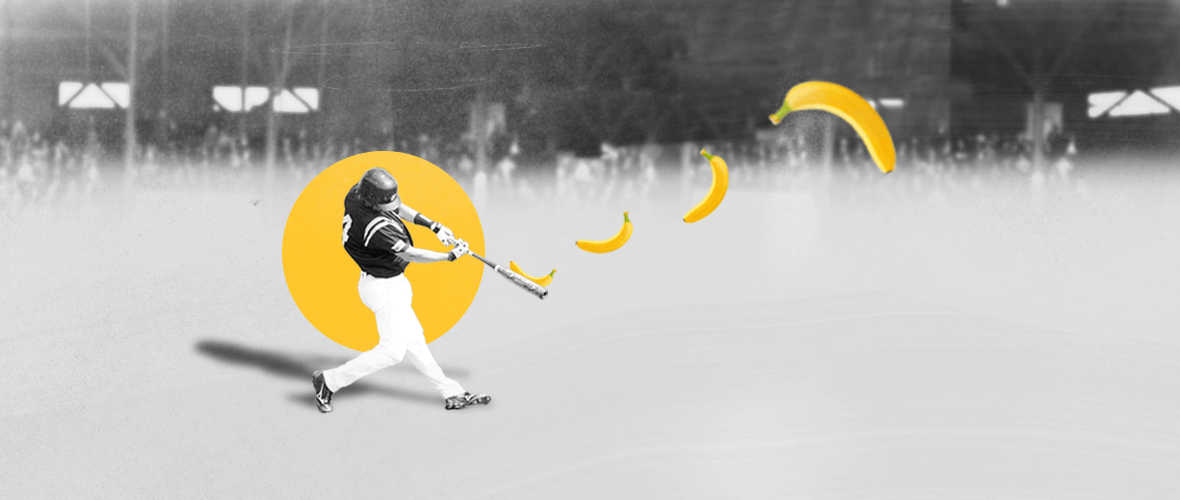Colorado Rockies Crisis Communications a ‘Swing and Miss’
Twitter, more than any other social networking site, is where news stories form due to the rapid spread of information when highly followed users all retweet the same video or content around the same time.
The latest example of Tweets creating news occurred Sunday afternoon, toward the end of an otherwise non-descript game between the Miami Marlins and Colorado Rockies.
A Marlins fan shared a 16-second video clip on Twitter of what appeared to be a Rockies fan twice shouting a racial slur, while Marlins player Lewis Brinson, who is Black, was at the plate.
When I first heard it, I also thought I had heard a racial slur. Perhaps that’s because I watched the video in the context of what everyone else thought they heard. Also, this isn’t new territory for Major League Baseball. In 2018, MLB instituted a universal fan code of conduct in response to racist language directed at former Baltimore Orioles outfielder Adam Jones in 2017.
Within a few hours reporters, columnists and other media personalities with Twitter followings in the millions had shared the video, offering strong opinions, including some that condemned the Rockies and MLB for not stopping the game until the fan was identified, removed from the stadium and banned for life or worse.
Mainstream national news outlets followed, leading the Rockies to issue a strongly worded statement on Sunday night.
At the same time, some Twitter users were more deeply analyzing the video and commenting that the Rockies mascot, a dinosaur named “Dinger,” was seated in the section directly behind home plate, close to where broadcast production teams place microphones.
This resulted in a theory on Monday morning that the fan had yelled the mascot’s name and not a racial slur.
Later that morning, the Rockies confirmed that the fan had actually yelled the mascot’s name via information shared with two reporters -- one from MLB.com and another from Channel 9 in Denver -- instead of through an official team statement.
Several hours later, the Rockies finally posted a formal statement confirming the fan was yelling to get the attention of the Rockies mascot, Dinger, and did not yell a racial slur.
Lessons Learned for the Rockies
Admittedly, this was a most unusual and incredibly challenging crisis communications scenario, but the Rockies made a few missteps that communications pros can learn from.
• The Rockies were slow to initially respond. Three hours passed between the incident and the Rockies Sunday night statement that expressed disgust at the alleged racial slur that had been shared across Twitter for hours.
It’s hard to know why there was a delay. Often the reason for delays in crisis statements is cumbersome internal review processes, sometimes involving internal or external legal counsel. Other times it’s because an organization is gathering all of the facts before speaking.
Regardless, three hours is an eternity in a Twitter-fueled crisis, which had the Rockies playing from behind, crisis wise.
• The language of the initial statement was too certain. This is a tough piece of criticism to offer, and to mix sports metaphors, it may read like classic “Monday Morning Quarterback” analysis, but bear with me.
Of course any business wants to come out strongly against all forms of racism and bigotry, and that’s clearly what the Rockies wanted to communicate by opening the Sunday night statement with “The Rockies are disgusted at the racial slur by a fan…”
But, the Rockies could have addressed my first concern about timing AND been a bit more careful in language choice by more quickly issuing an initial statement that leaned heavily on the term “investigation,” with plans to issue a more complete statement upon completion of that investigation.
Here’s why.
The Rockies were in a unique position to collect the necessary information -- first by working with its broadcast partners to try to determine the location of the stadium where the fan was sitting and then using its in-house ticket purchasing data to identify the fans seated in that area.
With that information collected, the Rockies would have been more equipped to issue a definitive statement after completing an investigation, giving them a better chance at accuracy, while still showing great concern about the allegations.
• The announcement of the correction didn’t match the initial statement. For some reason, the Rockies decided to confirm the online speculation that the fan was actually saying “Dinger” via unattributed statements to the MLB.com and Channel 9 reporters.
Three hours later, the Rockies finally posted a retraction statement to Twitter, which matched the overall look and style of the first statement on Sunday night.
It’s hard to know why the Rockies employed this strategy of media leaks, but there’s something we can learn from it. It’s critical to have your media relations and social media teams aligned during a crisis. In this situation, the media relations side confirmed facts to local media outlets well before the social side was ready to post an official statement. This led to a three-hour period where the information felt somewhat unofficial, creating conditions for continued public confusion.
• The correction never featured an apology to the fan. A key tenet of crisis communications is that you’ll sometimes have to apologize for something that wasn’t your fault. This is the perfect example. The Rockies operationally did nothing wrong to create this crisis, but it happened anyway. Despite good intentions, the Rockies accidentally portrayed a fan as a racist in the Sunday statement.
The Monday Twitter statement could have featured an apology for a “misunderstanding,” while still maintaining the important points about why remaining vigilant about racist language in MLB ballparks is so important.
Our collective worst fears about what might have been said in a Denver ballpark on Sunday were thankfully proven to be untrue.
This was a communications crisis situation the Rockies PR and social media teams won’t soon forget. I’m sure they’re re-evaluating some of these same areas as they try to prepare for the next first-of-its-kind communications crisis.






